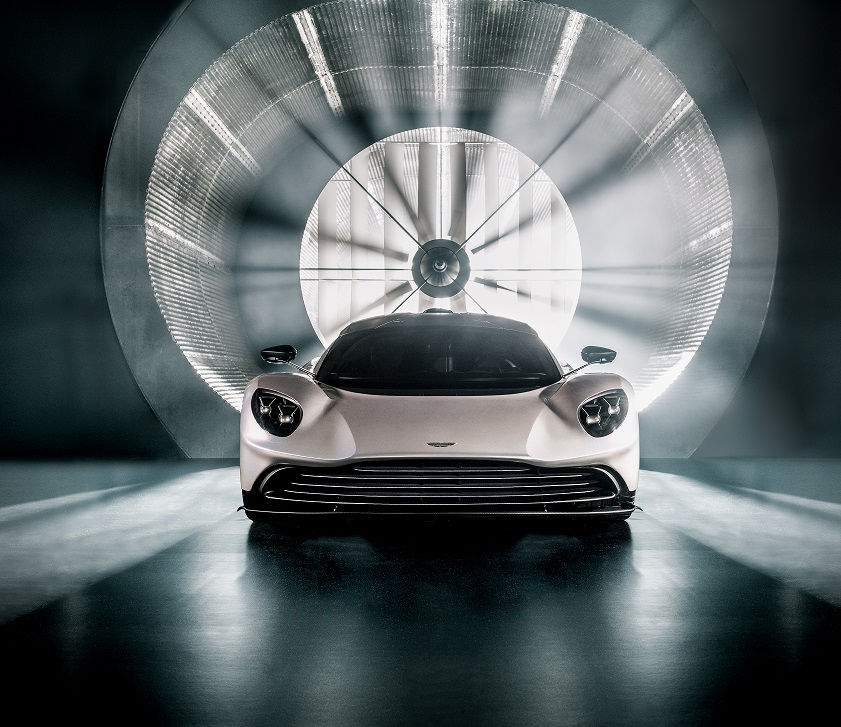The new Aston Martin Valhalla has received direct benefit from formula 1 aerodynamic development and modelling
Not being regulated by Formula 1 rules, the design engineers have had more scope in developing the aerodynamic features of the new sports car with the help of Computational Fluid Dynamics (CFD) and aerodynamic wind tunnel testing.
The aerodynamic approach to Valhalla starts in a similar way to an F1 car, by using all elements of the body shape to generate downforce and minimise drag. However, the Valhalla also benefits from fully active aerodynamic systems at both the front and rear of the car which will generate over 600kg of downforce at 240km/h. This enables Valhalla to constantly adapt front and rear downforce to maximise grip, balance and consistency, or reduce drag depending on the situation and the driving mode selected.
The vast knowledge of Computational Fluid Dynamics (CFD) and wind tunnel testing in F1 has been of huge benefit to the road car engineers. The same aerodynamic tooling techniques used to create the racing car have been used to develop the aerodynamics for the Valhalla.
The engineering team working directly with race engineers utilised the same CFD software and also used a scale model and moving road wind tunnel to develop the car, studying the same processes including ride height sensitivity, the effects of yaw, roll and pitch, steering and so on.
Aston Martin believes the result is a car that is capable of being used at the edge of its performance envelope with stability. The use of simulation using input from the CFD model and the wind tunnel results has been used by test drivers from the Formula 1 team to push the model to its limits before building the prototype.
- UK manufacturing steps up to COVID-19 crisis - April 2, 2020
- Clustering Innovation - March 12, 2020
- A Global Monitor - March 6, 2020

